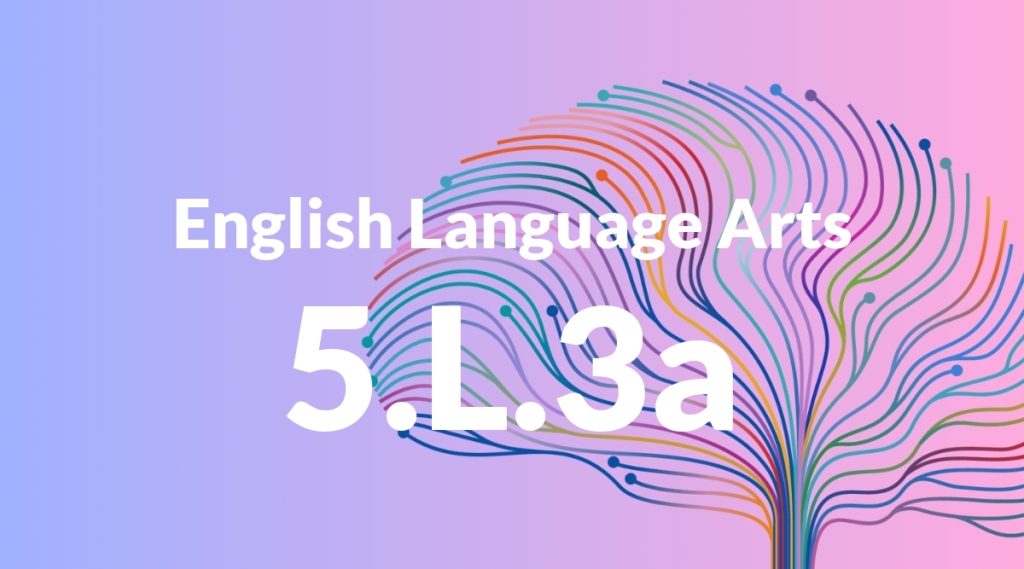Standard: 5.L.3 – Use knowledge of language and its conventions when writing, speaking, reading, or listening.
Grade level: Grade 5
Subject: English Language Arts
Domain: Language
Teacher Overview
This standard emphasizes the importance of understanding and using language conventions in various forms of communication. Mastery of this standard helps students become more effective communicators, which is crucial for their academic and personal success. Students should already understand basic grammar, punctuation, and sentence structure. They should also be comfortable with basic communication skills both in writing and speaking.
After mastering this standard, students will be able to adapt their language use to different contexts and audiences, enhancing their overall communication skills.
Common Misconception 1
A common misconception is that spoken and written language conventions are the same. This is incorrect because spoken language often includes informal grammar and slang that is not appropriate in written communication.
Intervention 1
To address this misconception, teachers can provide contrasting examples of spoken and written language, and engage students in activities that require them to convert spoken language into formal written text.
Common Misconception 2
Another misconception is that grammar rules are not important in casual communication. This is incorrect because even in casual settings, proper grammar helps ensure clear and effective communication.
Intervention 2
Teachers can use role-playing activities and real-world examples to demonstrate the importance of grammar in all forms of communication, highlighting how misunderstandings can arise from improper use.
Prerequisite Knowledge
Students should have a basic understanding of grammar rules, sentence structure, and punctuation. They should also be familiar with different types of texts and basic communication skills.
Subsequent Knowledge
Students will develop advanced writing and speaking skills, including the ability to adapt language for different audiences and purposes. They will also improve their ability to critically analyze texts and communicate effectively in various contexts.
Instructional Activities
- Peer editing and feedback sessions
- Role-playing different communication scenarios
- Writing letters and emails with appropriate tone and conventions
- Reading comprehension exercises focusing on language use
- Grammar and punctuation games and quizzes




